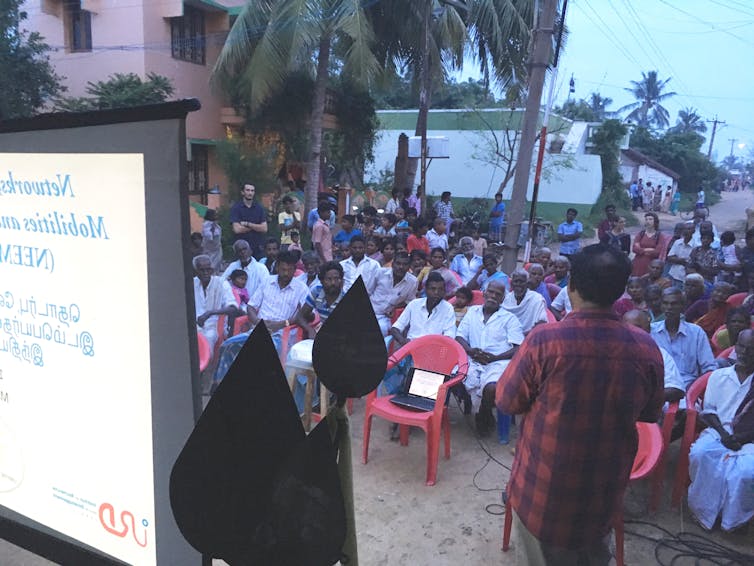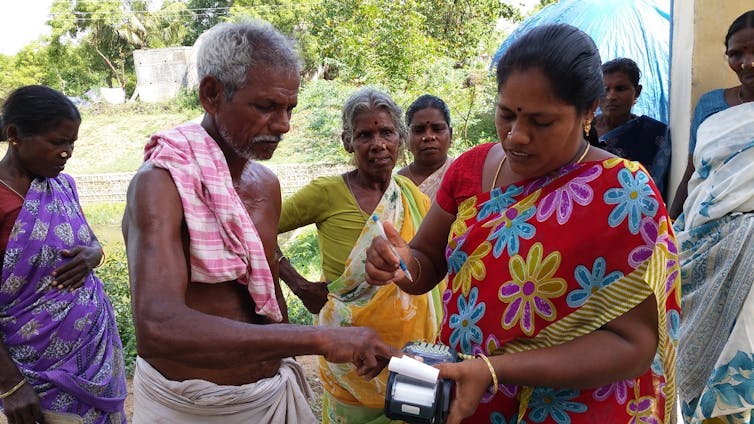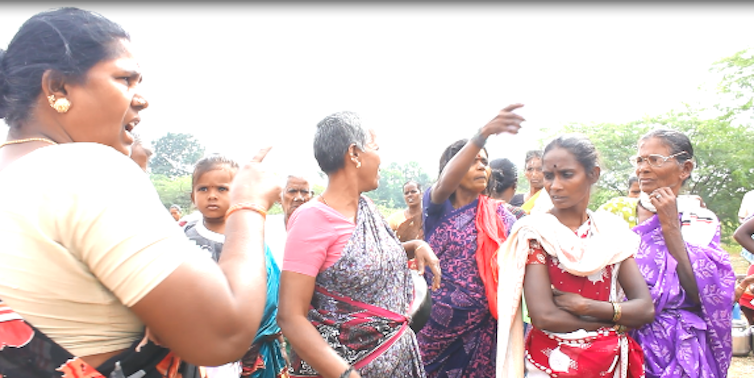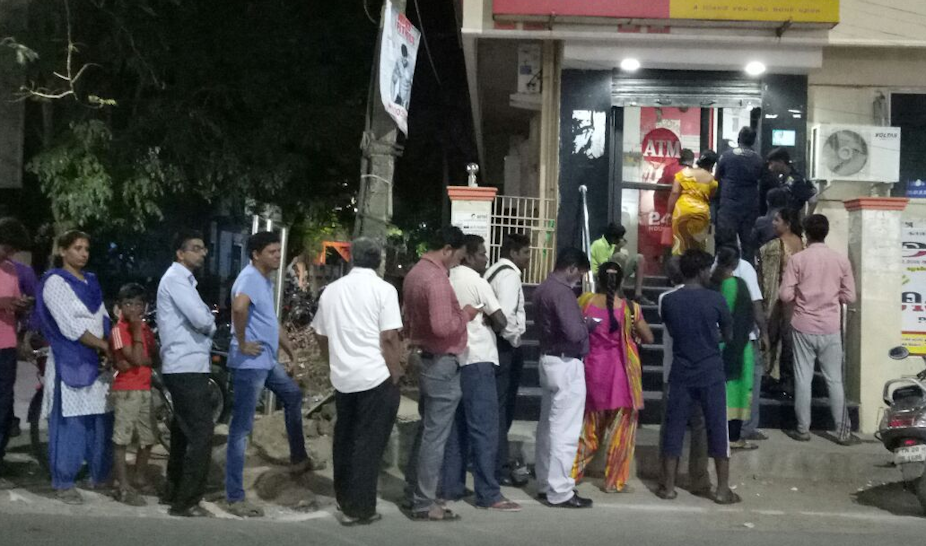On November 8, 2016, at 8 p.m., the Indian prime minister Narendra Modi announced the ban of the 500 and 1,000 rupee banknotes, the two highest value in circulation. From midnight onward, these two notes were no longer legal tender and had to be exchanged in banks for new notes.
The Modi’s measure was championed as an efficient means to fight corruption, promote a less-cash-based economy, and boost social protection. Recent ground-breaking data from South India by a team of the French Institute of Pondicherry (IFP) and the French National Research Institute for Sustainable Development (IRD), and within the NEEMSIS survey indicate serious reservations over those stated goals.
The implementation process faced technical disruptions, leading to severe cash shortages, and the overall poor preparation of the policy led the country into chaos for more than three months. The violence of the measure has been heavily criticized – for instance, Amartya Sen, Barbara Harriss-White and Prabhat Patnaik).
Field observations qualify some of these criticisms while widely confirming doubt as to its credentials as a “pro-poor measure” and as an efficient mean to formalise the economy. In fact, it is rather the opposite that was observed.

Everything has changed so that nothing has changed?
Demonetisation was supposed to drive out “black money”, either by encouraging black money-holders to give up their holdings, or through detection by the tax authorities once the cash was deposited in the banking system. Data from the Reserve Bank of India has now shown that this failed, backed up by observations at the micro level.
While the narrative was that people had to queue for days to deposit notes in banks, and this is partly true, field observations also reveal that old notes went on circulating very intensively: huge amounts of cash were disseminated by black money-holders into a myriad of networks, the ultimate objective being to sub-contract the deposit of non-taxable small amounts, often through a long chain of intermediaries. Both the strength and plasticity of informal networks have allowed cash holders to get rid of their old notes quite easily, using a range of tactics and social relations.

Furthermore, although recycling old cash had a cost, but often lower than taxation, many black money-holders had been able to use demonetisation as an opportunity to broaden their clientele or discover new market niches. For instance, an entrepreneur specialising in recycling gunny bags has invested in a construction company. Demonetisation also strengthened pre-existing business relations, allowed to build new ones, or to set up new projects. Some trader networks even used the demonetisation to boost their sales by accepting old cash, while using their network to recycle it.
Failed confidence in banks
Demonetisation, by forcing people to deposit their holdings in bank accounts and in line with a number of measures over the past decade, was also supposed to promote bank savings, especially among the poor. Mutual distrust between bankers and villagers, especially among the most marginalised, was already tangible before the demonetisation. The many difficulties rural banks faced in delivering cash during the demonetisation obviously heightened such mistrust.
This was even more pronounced among women and Dalits, often badly treated by bankers.

Managing cash
During demonetisation, and for more than three months, the scarcity of cash significantly slowed down the economy. According to various estimates, the Indian economy lost 0.5 points of growth as a direct result. Despite the shortage of new banknotes, many economic transactions continued on the basis of mutual trust and credit, through deferred wage payments and consumer good purchases on credit. Delayed payments, which affected castes unequally, in turn reinforced informal channels of wage payments, such as wage advances, rather than formalising them.
In Tamil Nadu, many workers are seasonal migrants in cane cutting and brick moulding. They are used to receiving large wage advances that are distributed during the off-season.
Advances on wages after demonetisation were mostly received by lower castes working in brick kilns, where employers tried to use this as an opportunity to get rid of part of their old cash surplus. Labour intermediaries, usually in charge of distributing advances and managing labourers, had to negotiate with workers. Some families accepted the old cash, deposited it slowly in the bank to avoid any suspicion, and withdrew it slowly. Given the liquidity scarcity all the rural banks faced, they had to go there many times in vain, spending considerable time and money to convert their employers’ old – and certainly black – cash.

While interpersonal networks have been instrumental in coping with the shock of demonetisation, not all households were equally equipped to do so.
Interpersonal relationships of gender and caste have partially helped mitigate the harmful effects of demonetisation, but excluding those households without anyone to count on. Monetary surplus were injected into networks through gifts, loans, or wage advances. In fact, saving is first and foremost relational, taking the form of investment “in people”.
Ceremonial gifts are a good example: people regularly contribute to ceremonies in their circles, which are subsequently reciprocated at their own ceremonies and are thus considered as saving.
The nature of these networks is highly diverse. Some are clearly based on hierarchy, meaning on caste, patriarchy or social class, and any new loan or wage advance strengthens the borrower’s inferiority, whether through high interest payments, free services or new features of labour bondage. Other financial transactions are instead based on solidarity and reciprocity, expressing the so-called redistributive nature of interpersonal networks, and are most often found within caste and kin.

Formalising or informalising the economy?
Hence what really seemed to have happened, instead of a clear movement toward more formalised economic transactions, has rather been a reinforcement of the informal economy, which is the very thing that allowed actors to temper the violence and harmful consequences of the shock.
The policy implications of this finding are crucial. It is fully justified to think about measures for formalising the economy, but to expect that technology – through bank and the digitalisation of payments – could solve poverty and lack of protection is an illusion.
In Europe, bancarisation emerged at the same time as social protection, but it did not come first, and was absolutely not the fundamental cause of social protection.
In present-day discourse on digitalisation, the link to formalisation often remains elusive, as if it were automatic. Yet formalisation requires much more than transparency of payment. While cashless policies flourish in various parts of the world, we believe our findings have major implications, and seriously question the merit of such policies, especially for the most marginalised segments of the population.

